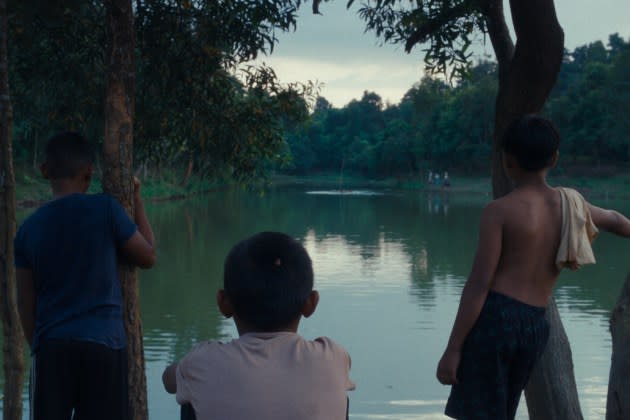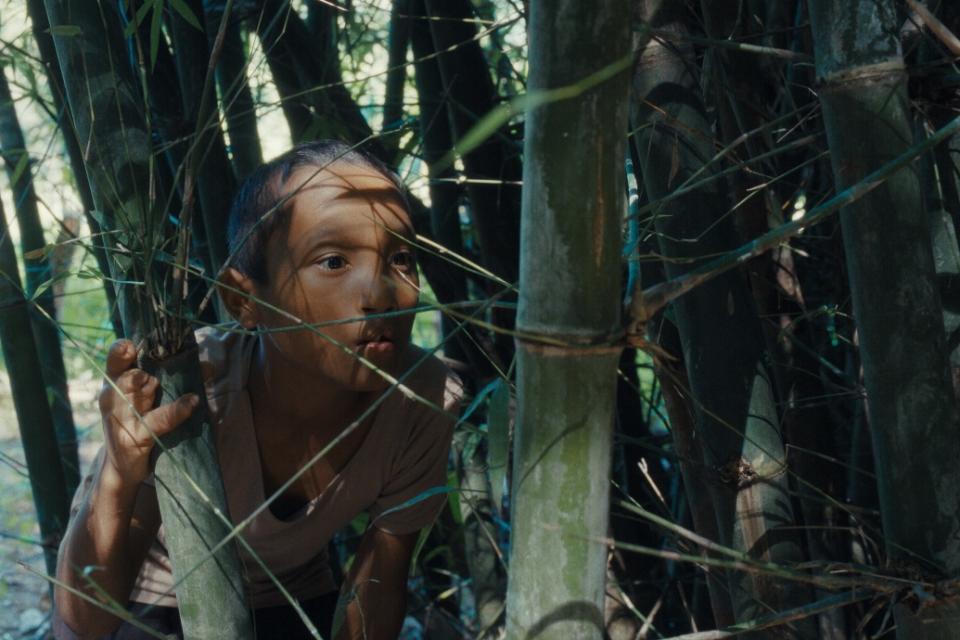Dominic Sangma On Fear Of Outsiders In Rare India-China Collaboration ‘Rapture’ – APSAs & Mumbai Film Festival

Rapture, the second film from Indian filmmaker Dominic Sangma, is being presented with the Cultural Diversity Award at this year’s Asia Pacific Screen Awards.
The Garo-language film, which is the second in a trilogy set in Sangma’s home village, had its world premiere in Locarno film festival’s Cineasti del Presente strand; also screened at Busan International Film Festival and in the South Asia Competition of Mumbai Film Festival, where it won the Netpac Award.
More from Deadline
Set amongst the Garo community in Meghalaya, Northeast India, the story follows a ten-year-old boy, suffering from night blindness, who lives in a village that is gripped with fear as local people keep disappearing and rumors are spreading of kidnappers trafficking in human organs.
Making matter worse is the local priest who has prophesied that an apocalyptic darkness will consume the world, lasting for 80 days. In the midst of this paranoia, the boy witnesses an act that plunges him into a mystical world.
Backed by Hubert Bals, Visions Sud Est and Doha Film Institute, the film is produced by Sangma’s Anna Films with China’s Xu Jianshang and Sun Li; Indian producers Anu Rangachar, Harsh Agarwal, Aditya Grover and Stephen Zacharias; and Meghalaya-based Eva Gunme R. Marak, who is a patron of Northeast Indian arts.
Sangma graduated from Kolkata’s Satyajit Ray Film and Television Institute and made his feature debut with Ma.Ama, which premiered at Mumbai film festival in 2018 and won best cinematography at Shanghai film festival. Deadline sat down with Sangma and Marak just before the film’s first screening in Mumbai.
DEADLINE: How does Rapture expand on the trilogy you started with Ma.Ama?
DOMINIC SANGMA: Ma.Ama explored my personal memories and family experiences in the village, whereas Rapture is about the wider society in the village, although it’s still based on my own memories. I grew up experiencing this deep fear of outsiders, not only for different tribes, but there was an apprehension that anyone who came from outside could kidnap you because this was happening all the time. As a result there were many cases of people travelling to new areas and being beaten by the local villagers, sometimes to death.

But I realised this fear is not something that happens only in my village, there’s a deep-seated fear in the wider world that is bound up in this notion of “Us and Them” and leads us to attack those who come from outside. I wanted to explore where the fear comes from – who is creating this fear? Or who is using it for their own ends?
DL: There’s also an interesting conflict between the Christian practices that the village has adopted and traditional shamanistic beliefs that they’re being discouraged from following.
DS: Who we are today is made up of all these layers that we’ve experienced – whether it’s colonialists, who wanted to trade with us, or missionaries who wanted to convert us, coming to our land. In order to understand ourselves and why we behave the way we do, we have to look back at everything that happened before. Nowadays, there are many people in our community who are afraid of Garo practices. But the film is not trying to say who is right or wrong, it’s just raising these questions and exploring who we are.
DL: Is the question of identity a complicated issue in Northeast India?
DS: It’s hugely complicated – although things are changing thanks to social media, there’s always been a separation between the Indian mainland and the Northeast. If we travel to Bombay or Delhi, we often get asked if we’re from China or Malaysia. Even my state, Meghalaya, is not just one community – there are three major tribes, Khasi, Jaintia and Garo, each speaking their own language that the other tribes don’t understand. Of course, it’s easy for those differences to be exploited by others. That’s something I’m also trying to explore in the film – we need to take a moment to pause and think about why we react the way we do, and what is happening in our lives.
DL: How did you meet your Chinese producers?
DS: I met Xu Jianshang when my short film was playing in a student film festival at Beijing Film Academy. She really liked it and came on board to produce Ma.Ama. For Rapture, she started developing it at AFiS (Busan Asian Film School) then we went to Film Bazaar (co-production market organised by India’s NFDC) and La Fabrique in Cannes. We got funding form Hubert Bals, Vision Suds Est and Doha, which was great, because we could spend all of it in India and didn’t need to travel for post.
DL: How did you cast and shoot the film in such a remote location?

DS: All the actors are from my village or Tura, which is the main city for the Garo community in Meghalaya. We shot everything in my village and the Garo Hills which was a huge challenge, because we don’t have our own camera equipment so had to bring it all from Assam and other places. That’s one of the reasons Eva came on board.
EVA GUNME R. MARAK: Dominic reached out on social media to ask if anyone could host the cast and crew in the Garo Hills. I run a small homestay and ended up looking after 55 people. I feel indebted to him because the Garos are a very underrepresented people and he’s a very talented young man who is bringing our language and culture to the world. On the other hand, he’s a very demanding director. He wouldn’t take no for an answer if he wanted a live cow in the middle of the night, or 200 extras, or a wall knocking down, or a building aged and repainted (Eva is smiling as she says this).
DS: My Chinese producer couldn’t come to India because it was during the pandemic so I asked Eva to help produce. She also organises weddings and I did warn her that this shoot is going to be like a 2,000 person wedding every day!
DL: Do you have any plans to release the film theatrically in India?
DS: We have a distributor, Shankar Lall Goenka, who distributes most of the Bollywood films in the Northeast. He saw my first film and wanted to release it, but then Covid happened, so now he’s planning to do a release for both of my films – at least in some single screens in the Northeast and perhaps a few in Bombay and Kolkata. We don’t have a theatre in our local place but we have a 700-seat auditorium run by the government where we can screen the film. We’re also having some talks with a Bangladeshi distributor, as Meghalaya shares a border with Bangladesh and there’s a large Garo-speaking population there.
DL: There seems to be a lot of interesting films coming from the Northeast of India – what is supporting that activity?
DS: So much has happened in the past five years – we’ve seen really talented filmmakers coming through like Rima Das [Village Rockstars, Tora’s Husband] from Assam, Haobam Paban Kumar [Nine Hills One Valley, Joseph’s Son] from Manipur, and Pradip Kurbah [Market] who is also from my state. Events like Film Bazaar really helped us, because before that we were never exposed to the idea of collaboration, and we all owe a debt to Raja Chhinal [former Film Bazaar head who died in 2020] who encouraged us to join co-production markets and was a like a big brother to us all. Festivals like MAMI have also been a great support to films from the Northeast.
For me, the next step is to be seen as an auteur filmmaker, not just telling stories that represent indigenous culture, but to be recognised for our craft and our story-telling. I aspire to create a filmmaking style that is unique and recognisably mine.
Best of Deadline
2023 Premiere Dates For New & Returning Series On Broadcast, Cable & Streaming
SAG-AFTRA Interim Agreements: Full List Of Movies And TV Series
Sign up for Deadline's Newsletter. For the latest news, follow us on Facebook, Twitter, and Instagram.


